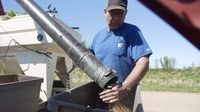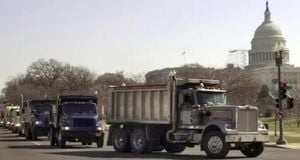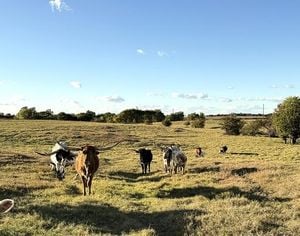As the golden fields of the Midwest reach their peak, American soybean farmers are staring down a season of deep uncertainty, with trade tensions and plummeting prices threatening their livelihoods. On October 6, 2025, President Donald Trump is expected to announce a sweeping aid package—potentially as high as $15 billion—to help farmers weather the storm created by tariffs and the ongoing trade standoff with China, according to multiple sources cited by Reuters and Associated Press.
This financial lifeline, focused primarily on soybean growers, comes at a critical juncture. Iowa, one of the nation’s agricultural powerhouses, will soon harvest 9.3 million acres of soybeans. But with China—historically the United States’ top soybean customer—halting purchases in response to tariffs, those beans have nowhere to go. "Well it's definitely taking a step back," Dr. Chad Hart, an economics professor at Iowa State University, told KCCI. "The agricultural economy is a lot like the general economy. It goes through cycles. We have periods of good times and we have recessions. Right now agriculture's definitely going through a recession."
The numbers paint a stark picture. In 2024, China bought $12.6 billion worth of U.S. soybeans, according to federal data from the Department of Agriculture. But as the 2025 harvest season kicks off, China has made no new purchases. Instead, China has turned to other suppliers, ordering nearly two million tons of Argentine soybeans and soy products, as KSHB 41 News reported. Dennis Hupe, Director of Field Services at the Kansas Soybean Association, explained, "They're making a very definite point to the administration that, 'Hey, we can obtain what we need from Argentina and Brazil, and we do not need you.'"
The White House has acknowledged the gravity of the situation. Top economic adviser Kevin Hassett told CNBC, "We've had numerous meetings over the last week or two about what we're going to do about the hit farmers have taken. Those big measures are going to be public really, really soon." Hassett’s remarks reflect the urgency felt in farm country, where silos are full and, as he put it, "there are soybeans sitting on the ground with tarps over them. That's unacceptable to the president."
The proposed aid package, expected to exceed $10 billion and possibly reach $15 billion, would be funded by tariff revenue. President Trump explained the rationale on September 25, 2025: "We're going to take some of that tariff money that we made, we're going to give it to our farmers, who are, for a little while, going to be hurt until the tariffs kick into their benefit. So, we're going to make sure that our farmers are in great shape, because we're taking in a lot of money." The Treasury Department says the federal government collected roughly $215 billion in tariffs during the 2025 fiscal year.
Yet, the road to relief is anything but smooth. The ongoing government shutdown complicates the rollout of such a massive bailout. Statutory caps limit direct payments to farmers at $350 million, a fraction of what’s being discussed, and raising those caps requires Congressional action—nearly impossible while lawmakers remain deadlocked. The USDA’s usual financing mechanism, the Commodity Credit Corporation (CCC), is also running low on funds and has not been refilled due to the shutdown, as noted by Jonathan Coppess, an associate professor at the University of Illinois Urbana-Champaign. During Trump’s first term, the CCC was used to deliver over $23 billion in trade aid, but current reserves likely fall short of what’s needed now.
The government’s ability to distribute aid is further hindered by closed USDA offices, leaving farmers like Bill Waters of Kansas and Missouri in limbo. "Once you get on that merry-go-round, how do you get off?" Hupe asked, echoing widespread concerns that emergency aid, while welcome, is not a permanent fix. Waters, who has resorted to selling old equipment to cover rising production costs, put it plainly: "The farm aid deal is going to help the farmer now in the short term. But it's just going to be a just a band-aid if we don't get something soon."
Indeed, the cost of farming has soared. Hupe told KSHB 41 News that farm equipment prices have jumped over 50% in the past five years, while the price of soybeans per bushel has declined. Input costs for fertilizer and seed have also skyrocketed, squeezing already thin margins. The Kansas Soybean Association is closely tracking the economic stress caused by tariffs—tariffs that many farmers support in principle, but which are testing their ability to stay in business for another year.
The uncertainty is palpable across the heartland. Nels Leo, a farmer in Guthrie County, Iowa, voiced a common sentiment: "Most farmers I know really just want to be farmers. We want to do what we do best and grow crops, market them and what we would really like to do is know what the rules of the game are and not have them change would be the biggest thing." The Iowa Soybean Association, led by Tom Adam, is urging the Trump Administration to reach a trade deal with China as quickly as possible, so farmers can make sales this harvest season and plan for the next.
The scale of the crisis is national. In Minnesota, Farm Bureau president Dan Glessing was photographed loading soybeans into his planter near Waverly, Minnesota, as he discussed the bailout, tariffs, and the government shutdown with MPR News. Meanwhile, in Ohio and across the Midwest, harvesters are loading soybeans into trucks with nowhere to send them, as Reuters documented.
Despite the challenges, some farmers are finding ways to cope. Kansas soybean crops are expected to yield better than in years past, which could offset some costs, Hupe noted. And government payments to farmers are already set to reach near-record highs of more than $40 billion this year, thanks to disaster and economic aid passed by Congress last year.
Still, the consensus among farmers and industry leaders is clear: while the proposed aid package will provide much-needed short-term relief, it does not address the underlying market problems. "A new trade deal is what we need," said Bill Waters. Until such a deal is reached and normal trading resumes, farmers remain at the mercy of global politics and shifting policies.
As the Trump Administration prepares to unveil its plan, America’s soybean growers are left hoping that this season’s bailout will be the bridge they need to survive—and that a more permanent solution is just over the horizon.






